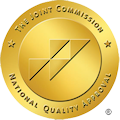The journey through post-traumatic stress disorder (PTSD) and addiction is a deeply personal and often challenging one. PTSD develops after experiencing or witnessing a traumatic event, which can deeply affect a person’s emotional health. On the other side, addiction is marked by a compulsive need to use substances, even when they bring harm. When PTSD and addiction occur together, they create a complex health challenge that affects many people.
Research has consistently shown a strong connection between PTSD and addiction. Studies indicate that the prevalence of substance use disorders (SUD) among people with PTSD is significant. In the United States, an estimated 46% of people with PTSD also have a SUD. This co-occurrence is more than a coincidence; it’s a response to the overwhelming symptoms of PTSD, where substances are used in an attempt to find relief from the painful symptoms of PTSD, such as intense memories, nightmares, and anxiety. What starts as seeking momentary comfort can, unfortunately, grow into an addiction, adding layers to the struggle with mental health.
Living with both PTSD and addiction can drastically affect a person’s life. It can damage relationships, interfere with work or school, and lead to legal problems. Also, having both disorders simultaneously can make treatment more complex.
Focusing on only one issue without addressing the other can result in a return to old habits or an incomplete healing process. At California Addiction Treatment, we understand the intricate link between these two conditions. We offer a dual diagnosis program that addresses both issues simultaneously, ensuring a more holistic recovery, and helping our clients regain control over their lives.
Understanding
Post-Traumatic Stress Disorder (PTSD)
PTSD is a mental health condition that can emerge after a person has been through a traumatic event. It’s a response to the intense stress that can follow such experiences, affecting people from all walks of life. PTSD can result from various traumatic experiences, such as combat exposure, physical or sexual assault, natural disasters, or accidents. Witnessing these events or even learning about them happening to a loved one can trigger symptoms of PTSD. Not everyone who experiences trauma will develop PTSD; it occurs when the natural coping mechanisms are overwhelmed.
Statistics reveal that about 6 out of every 100 people will encounter PTSD at some point in their lives, with women being more susceptible than men. Veterans, survivors of abuse, first responders, and individuals in high-stress professions are particularly at risk. The condition can also lead to co-occurring issues like depression or substance abuse, making it crucial to seek comprehensive treatment.
Understanding PTSD is the first step towards healing. With proper support and treatment, people can manage their symptoms and regain control over their lives. It’s a journey of recovery that requires patience, understanding, and compassionate care.
The Symptoms and
Effects of PTSD
Post-traumatic stress disorder (PTSD) can have a profound impact on a person’s life, affecting their mental, emotional, and physical well-being. Recognizing the symptoms and understanding their effects is crucial for supporting those affected by PTSD:
These are recurrent, unwanted distressing memories of the traumatic event that can suddenly come to mind, causing significant stress or emotional pain.
People with PTSD may have frequent and distressing dreams related to the trauma, which can disrupt sleep and lead to fear of going to bed.
This symptom involves feeling as though the traumatic event is happening all over again, which can be triggered by reminders of the trauma.
Exposure to reminders of the trauma can lead to intense psychological suffering, such as panic attacks or intense sadness.
Reminders of the trauma can also cause physical symptoms like sweating or nausea, which are part of the body’s fight-or-flight response.
People may actively avoid reminders of the trauma, which can include places, activities, or even thoughts and conversations related to the event, which can lead to isolation.
Some may have difficulty remembering important aspects of the traumatic event, which is often a protective mechanism of the mind.
PTSD can lead to persistent and exaggerated negative beliefs about oneself or the world, contributing to feelings of hopelessness or worthlessness.
A sense of feeling estranged from others and having difficulty maintaining close relationships is common, as trust and emotional closeness can be challenging.
There may be a loss of interest in activities that were once enjoyable, leading to withdrawal and a sense of disconnection from life’s pleasures.
This includes angry outbursts or aggressive behavior that may seem out of character or disproportionate to the situation.
An overly alert state or being easily startled can be exhausting and make it hard to relax or feel safe.
Engaging in risky or harmful activities without considering the consequences is a symptom that can lead to further complications.
Trouble focusing on tasks at hand can affect work, school, or daily activities, making it hard to complete tasks.
Problems with falling or staying asleep are common, and poor sleep can exacerbate other PTSD symptoms.
PTSD can cause persistent negative thoughts about oneself or the world, feelings of detachment, and difficulty experiencing positive emotions.
Symptoms include constant alertness, irritability, anger outbursts, difficulty concentrating, hypervigilance, and an exaggerated startle response.
Sleep issues are common, including trouble falling or staying asleep, and nightmares related to the trauma.
Some people may feel emotionally numb, unable to experience joy, love, or happiness, as a way to cope with overwhelming pain.
It’s not uncommon for people with PTSD to struggle with guilt or shame about the traumatic event, sometimes blaming themselves or feeling ashamed of their reactions.
The intensity of these symptoms can differ from person to person and may naturally alter as time goes on. If a person is also suffering from addiction, it’s best to seek out treatment geared toward a dual diagnosis so that healing can be comprehensive.
The Categories of
PTSD Symptoms
Post-traumatic stress disorder (PTSD) manifests in various ways, affecting different aspects of a person’s life. Understanding the categories of PTSD symptoms can provide insight into how the condition impacts individuals and how it can be effectively managed.
These symptoms involve intrusive thoughts, memories, or flashbacks of the traumatic event. People may experience distressing dreams, vivid recollections of the trauma, or flashbacks where they feel as though they are reliving the event. Reminders of the trauma can trigger intrusive symptoms and can significantly disrupt a person’s daily life.
Avoidance symptoms involve efforts to avoid reminders of the traumatic event. People may avoid certain places, activities, or conversations that remind them of the trauma. They may also avoid talking about their feelings or memories related to the event. Avoidance can serve as a coping mechanism to temporarily alleviate distress but can ultimately hinder the healing process.
PTSD may result in shifts in a person’s emotional state and thought patterns, often bringing about challenging changes in mood and outlook. This may include persistent negative beliefs about oneself or the world, feelings of detachment from others, inability to experience positive emotions, and a sense of hopelessness about the future.
Hyperarousal symptoms involve being in a constant state of heightened alertness or arousal. People may experience irritability, anger outbursts, difficulty concentrating, hypervigilance, and exaggerated startle responses. These symptoms can make it challenging to relax or feel safe, leading to feelings of exhaustion and stress.
PTSD is a complex condition that can have far-reaching effects on a person’s life. By recognizing the symptoms and understanding their impact, we can provide better support and resources for those living with PTSD. If you or someone you know is experiencing symptoms of PTSD, seeking help from a mental health professional is essential for managing the condition and promoting healing.
Treating
PTSD and Addiction
Treating co-occurring PTSD and addiction requires a multifaceted approach that addresses the underlying issues contributing to both conditions. By integrating evidence-based therapies, personalized support, and holistic interventions, individuals can overcome dual diagnosis challenges and reclaim their lives.
Addiction treatment that addresses both PTSD and addiction simultaneously has shown promising results in improving outcomes for people facing dual diagnosis. These programs typically combine therapies such as cognitive-behavioral therapy (CBT), trauma-focused therapy, and addiction counseling to address the complex interplay between PTSD and substance abuse.
Trauma-informed care is essential for effectively treating PTSD and addiction. This approach recognizes the prevalence and impact of trauma and emphasizes creating a safe and supportive environment for healing. By understanding the underlying trauma and its effects on a person’s life, treatment providers can tailor interventions to meet the unique needs of each individual.
Trauma-informed care is essential for effectively treating PTSD and addiction. This approach recognizes the prevalence and impact of trauma and emphasizes creating a safe and supportive environment for healing. By understanding the underlying trauma and its effects on a person’s life, treatment providers can tailor interventions to meet the unique needs of each individual.
Dual-diagnosis treatment programs are specifically designed to address the complexities of co-occurring disorders like PTSD and addiction. These programs offer integrated care that addresses both mental health and substance use issues, providing comprehensive support for people facing dual diagnosis.
In addition to traditional therapies, holistic interventions such as mindfulness practices, yoga, art therapy, and nutritional counseling can play a valuable role in treating PTSD and addiction. These approaches promote overall well-being and help individuals develop healthy coping mechanisms to manage stress and cravings.
Recovery from PTSD and addiction is a lifelong journey that requires ongoing support and aftercare. After completing a treatment program, individuals may benefit from participating in support groups, continuing therapy, and engaging in activities that support their sobriety and mental wellness.
PTSD and Addiction Treatment in Huntington Beach
Treating PTSD and addiction is a delicate balance that requires compassion, expertise, and a commitment to holistic care.
At California Addiction Treatment in Huntington Beach, we understand the complexities of dual diagnosis and offer specialized programs tailored to address both PTSD and addiction simultaneously. Our dual-diagnosis treatment approach combines evidence-based therapies, trauma-informed care, and personalized support to meet the unique needs of each person. We provide a safe and nurturing environment where individuals can heal from past traumas while learning healthy coping mechanisms to overcome addiction.
With a team of experienced professionals, including therapists, counselors, and medical staff, we guide people through every step of their recovery journey. From medically supervised detoxification to trauma-focused therapy and ongoing aftercare planning, we provide comprehensive support to help individuals achieve lasting sobriety and mental wellness.
If you or someone you know is struggling with PTSD and addiction, don’t wait to reach out for help. Contact us today to take the first step towards healing and reclaiming a life free from the grips of addiction and trauma. Your journey to recovery starts here.

Dr. Deena Manion LCSW #20628, a Doctor of Psychology and Licensed Clinical Social Worker since 1993, is the Co-Founder of California Addiction Treatment Center. She brings extensive experience in addiction and mental health from her previous roles at prominent recovery centers and her private practice in Los Angeles and Agoura Hills, CA. Dr. Deena has also appeared as an expert on Dr. Phil’s show and podcast, as well as various other TV programs and documentaries, sharing her expertise in mental health and addiction. Her goal is to leverage her clinical skills in the entertainment industry to reach a wider audience, making her a valuable asset in the field.


